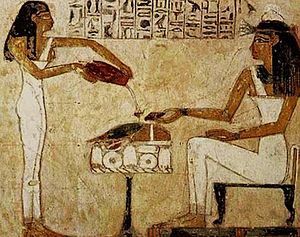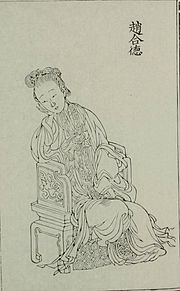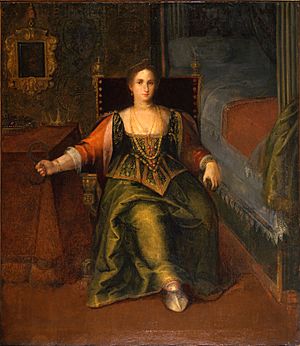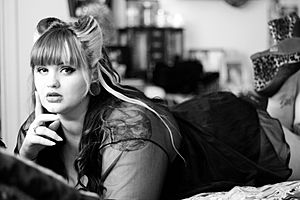Body image facts for kids

Body image is a person's perception of their own physical appearance.
Body image can be negative ("body negativity") or positive ("body positivity"). A person with a negative body image may feel self-conscious or ashamed, and may feel that others are more attractive. In a time where social media holds a very important place and is used frequently in our daily lives, people of different ages are affected emotionally and mentally by the appearance and body size/shape ideals set by the society they live in. These standards created and changed by society created a world filled with body shaming. Aside from having low self-esteem, sufferers typically fixate on altering their physical appearances. Such behavior creates body dissatisfaction and higher risks of eating disorders, isolation, and mental illnesses in the long term. Often, people who have a low body image will try to alter their bodies in some way, such as by dieting or by undergoing cosmetic surgery. On the other hand, positive body image consists of perceiving one's figure clearly and correctly, celebrating and appreciating one's body, and understanding that one's appearance does not reflect one's character or worth.
Many factors contribute to a person's body image, including family dynamics, mental illness, biological predispositions and environmental causes for obesity or malnutrition, and cultural expectations (e.g., media and politics).
History



In Ancient Egypt, the perfect woman was said to have a slender figure, with narrow shoulders, and a tall waist. Ancient Greece focused more on the male figure, but its female ideal was full-figured and plump with fair skin tones. Han Dynasty China primarily emphasized the face, skin, and hair. Ideal traits included clear, white skin; long, dark hair; and, for men, a stalwart frame. Any feature that implied social status or wealth was ideal.
During the Italian Renaissance, a wife's appearance was taken as an important reflection of her husband's status; size was linked to wealth, and so the ideal wife was held to have full hips and an ample bosom. The Victorian Era witnessed a similar movement, but the popularity of the waist-cinching corset led to the desirability of the hourglass figure. In the 1900s U.S. fashion and media industries celebrated the Gibson Girl: slim and tall, with a large bust and wide hips, but a narrow waist.
After World War I, the Gibson Girl transformed into the Flapper, an ideal type which dominated the period of the "Roaring Twenties". Women transitioned towards androgynous looks, in which hair styles were kept short, and brassieres were worn to flatten the chest.
Dress sense became more casual as well, perhaps reflecting a postwar relaxation of social and political tension. With advertisements increasingly advocating the need to achieve a thinner frame, many women therefore pursued diets and exercise. Although slimmer body types were favoured, a sporty and healthy appearance was still prized above the frail and sickly look from the Victorian Era.
Austrian neurologist and psychoanalyst Paul Schilder coined the phrase 'body-image' in his book The Image and Appearance of the Human Body (1935).
The 1930s and 1940s witnessed the devastating effects of the second World War. While men were out on the battlefield, women began entering the workforce. This resulted in more formal and traditional military dress styles for women, which caused another shift in body image. While waists remained thin but prominent, the media embraced a more curvaceous look similar to the hourglass figure.
Since this era was part of the golden age of Hollywood, many celebrities continued to influence this trend by wearing tight-fitting clothing that emphasized their figures. Notable names include Marilyn Monroe and Sophia Loren.
Depictions of the perfect woman slowly grew thinner from the 1960s onward. The "Swinging Sixties" saw a similar look to the Flapper with the emergence of high-fashion model Twiggy, who promoted the thin and petite frame, with long slender legs, and an adolescent but androgynous figure. Other characteristics include narrow hips and flat stomachs. Many women either underwent diets or switched to weight-loss supplements to achieve the new look. This eventually resulted in an increase in anorexia nervosa during the 1970s.
Greater importance was soon placed on fitness. Actress Farrah Fawcett introduced a more toned and athletic body type. The exercise craze continued in the 1980s with Jane Fonda and the release of workout videos, motivating women to be thin but fit and svelte. This era also saw the rise of tall, long-legged supermodels, such as Naomi Campbell and Cindy Crawford, who set a new beauty standard for women around the world.
In the 1990s, supermodel Kate Moss popularized the stick-thin figure instead: waifish appearances, bony structures, thin limbs, and an androgynous figure. As of 2017, efforts to promote a better body image have included an emphasis on fitness and plus-size models in the fashion and media industries. However, the advancement of technologies and pressures from the media have led to even greater importance being placed on the way we look as an indication of our personal value.
According to a study by Dove, only 4% of women thought they were beautiful, while approximately 70% of women and girls in the UK believed the media's portrayal of impractical beauty standards fueled their appearance anxieties. As a result, the U.S. Department of Health and Human Services reported that, 91% of women were mostly unhappy with their bodies, while 40% will consider cosmetic surgery to fix their flaws.
Related pages
See also
 In Spanish: Percepción corporal para niños
In Spanish: Percepción corporal para niños


